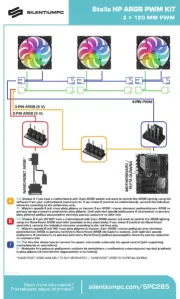Broan 507 Bedienungsanleitung
Broan
Ventilator
507
Lies die bedienungsanleitung für Broan 507 (4 Seiten) kostenlos online; sie gehört zur Kategorie Ventilator. Dieses Handbuch wurde von 4 Personen als hilfreich bewertet und erhielt im Schnitt 4.6 Sterne aus 2.5 Bewertungen. Hast du eine Frage zu Broan 507 oder möchtest du andere Nutzer dieses Produkts befragen? Stelle eine Frage
Seite 1/4

WARNING
TO REDUCE THE RISK OF FIRE ELECTRIC
SHOCK, OR INJURY TO PERSONS, OBSERVE THE
FOLLOWING:
1. Use this unit only in the manner intended by the
manufacturer. If you have questions, contact the
manufacturer at the address or telephone number
listed in the warranty.
2. Before servicing or cleaning unit, switch power off
at service panel and lock the service disconnecting
means to prevent power from being switched on
accidentally. When the service disconnecting means
cannot be locked, securely fasten a prominent warn-
ing device, such as a tag, to the service panel.
3. Installation work and electrical wiring must be done
by a qualified person(s) in accordance with all ap-
plicable codes and standards, including fire-rated
construction codes and standards.
4. Sufficient air is needed for proper combustion and
MODELS 506 & 507
CHAIN PULL FANS
MODELOS 506 y 507 VENTILADORES
CON TIRADOR DE CADENA
ADVERTENCIA
ADVERTENCIA PARA REDUCIR EL RIESGO DE INCENDIO,
DESCARGA ELECTRICA O LESIONES PERSONALES, CUMPLA
CON LOS SIGUIENTES PUNTOS:
1. Solamente use esta unidad de la manera propuesta por el fabricante.
Si tiene alguna pregunta, póngase en contacto con el fabricante en
la dirección o teléfono anotados en la garantía.
2. Antes de limpiar o de poner en servicio la unidad, apague el
interruptor en el panel de servicio, y asegure el panel de servicio
para evitar que se encienda accidentalmente. Cuando el dispositivo
para desconectar el servicio eléctrico no puede ser cerrado con
algún tipo de traba, sujete fuertemente al panel de servicio, una
etiqueta de advertencia prominente.
3. El trabajo de instalación y el alambrado eléctrico deben de llevarse
a cabo por personal competente de acuerdo con todos los códigos
y las normas correspondientes, incluyendo los códigos y normas
de construcción contra incendios.
INSTALLER: Leave This Manual With The Homeowner. HOMEOWNER: Use and Care Information on Page 3.
INSTALADOR: Deje este manual con el dueño de la casa. DUEÑO DE LA CASA: Información del uso y cuidado en la página 3.
LEA Y CONSERVE ESTAS
INSTRUCCIONES
READ AND SAVE
THESE INSTRUCTIONS
506
507
exhausting of gases through the flue (chimney) of fuel burning equipment to
prevent backdrafting. Follow the heating equipment manufacturer’s guideline
and safety standards such as those published by the National Fire Protection
Association (NFPA), and the American Society for Heating, Refrigeration and
Air Conditioning Engineers (ASHRAE), and the local code authorities.
5. When cutting or drilling into wall or ceiling, do not damage electrical wiring
and other hidden utilities.
6. Ducted fans must always be vented to the outdoors.
7. If this unit is to be installed over a tub or shower, it must be marked as ap-
propriate for the application.
8 Never place a switch where it can be reached from a tub or shower.
9. This unit must be grounded.
TO REDUCE THE RISK OF A RANGE TOP GREASE FIRE:
1. Never leave surface units unattended at high settings. Boilovers cause smoking
and greasy spillovers that may ignite. Heat oils slowly on low or medium settings.
2. Always turn hood ON when cooking at high heat or when cooking flaming foods.
3. Clean ventilating fans frequently. Grease should not be allowed to accumulate
on fan or filter.
4. Use proper pan size. Always use cookware appropriate for the size of the surface
element.
TO REDUCE THE RISK OF INJURY TO PERSONS IN THE EVENT OF A
RANGE TOP GREASE FIRE, OBSERVE THE FOLLOWING:*
1. SMOTHER FLAMES with a close-fitting lid, cookie sheet, or metal tray, then
turn off the burner. BE CAREFUL TO PREVENT BURNS. If the flames do
not go out immediately, EVACUATE AND CALL THE FIRE DEPARTMENT.
2. NEVER PICK UP A FLAMING PAN - You may be burned.
3. DO NOT USE WATER, including wet dishcloths or towels - a violent steam
explosion will result.
4. Use an extinguisher ONLY if:
A. You know you have a Class ABC extinguisher and you already know how
to operate it.
B. The fire is small and contained in the area where it started.
C. The fire department is being called.
D. You can fight the fire with your back to an exit.
*Based on “Kitchen Firesafety Tips” published by NFPA.
CAUTION
1. For general ventilating use only. Do not use to exhaust hazardous or explosive
materials and vapors.
2. To avoid motor bearing damage and noisy and/or unbalanced impellers,
keep drywall spray, construction dust, etc. off power unit.
3.
Please read specification label on product for further information and requirements.
4. The wearing of safety glasses and gloves is recommended when installing,
maintaining or cleaning the unit to reduce the risk of injury that could be
caused by the presence of thin metal and/or high moving parts.
4. Se requiere una cantidad de aire suficiente para la combustion y expulsión de gases
por la chimenea en el equipo de quemado de combustible para evitar la retrogresión
de la llama. Siga las especificaciones del fabricante del equipo de calefacción y las
normas de seguridad semejantes a las publicadas por la Asociación nacional de
protección contra incendios (NFPA por sus siglas en inglés), y la Sociedad americana
de ingenieros de calefacción, refrigeración y aire acondicionado (ASHRAE), y los
códigos de las autoridades locales.
5. Cuando corte o taladre en una pared o techo, no dañe el alambrado eléctricos ni otras
instalaciones ocultas.
6. Los ventiladores con conconductos deben ser siempre ventilados hacia el exterior.
7. Si esta unidad va a ser instalada encima de un baño o ducha,debe ser marcada como
apropiada para dicha aplicación.
8. Nunca coloque un interruptor donde pueda ser alcanzado desde la bañera o la ducha.
9. Esta unidad debe ser conectada a tierra.
PARA REDUCIR EL RIESGO DE INCENDIO DEBIDO A GRASA ACUMULADA EN LAS
HORNILLAS:
1. Nunca deje sin atender las unidades de superficie cuando tengan ajustes altos. Los
reboses pueden provocar humo y derrames grasosos que se pueden incendiar.
Caliente lentamente el aceite en un ajuste bajo o medio.
2. Siempre ENCIENDA la campana cuando cocine con alta temperatura o cuando
cocine alimentos que se puedan incendiar.
3. Limpie con frecuencia los ventiladores. No debe permitir que la grasa se acumule en
el ventilador ni en el filtro.
4. Utilice un sartén de tamaño adecuado. Siempre utilice el utensilio adecuado al
tamaño del elemento de superficie.
PARA REDUCIR EL RIESGO DE LESION A PERSONAS RESULTADO DE UN INCENDIO
DEBIDO A GRASA ACUMULADA EN LAS HORNILLAS, PROCURE LO SIGUIENTE:*
1. AHOGUE LAS LLAMAS con una tapa ajustada o charola de metal, después apague
la hornilla. TENGA CUIDADO A FIN DE EVITAR QUEMADURAS. Si las llamas no se
apagan de inmediato, EVACUE Y AVISE A LOS BOMBEROS.
2. NO LEVANTE NUNCA UNA SARTEN QUE ESTE EN LLAMAS - Usted se podrá quemar.
3. NO UTILICE AGUA, incluyendo toallas de cocina mojadas - puede resultar una explosión
de vapor violenta.
4. Utilice un extinguidor SOLAMENTE si:
A. Usted sabe que tiene un extinguidor de clas ABC y lo sabe utilizar.
B. El incendio es pequeño y contenido dentro del área donde se inició.
C. Los bomberos han sido avisados.
D. Usted puede combatir el incendio con una salida a su espalda.
* Basado en las recomendaciones para “Seguridad en la Cocina” publicadas por la NFPA de los EEUU.
PRECAUCION
1. Solamente para uso de ventilación general. No se use para extraer materiales ni vapores
peligrosos o explosivos.
2. Para evitar daños al cojinete del motor y/o impulsores ruidosos o desequilibrados, mantenga
la fuente de potencia lejos de rocíos de pared seca, de polvo de construcción, etc.
3. Lea la etiqueta de especificaciones del proconducto para más información y requisitos.
4. Se aconseja llevar guantes y gafas de protección durante la instalación, el mantenimiento
o la limpieza del aparato para reducir el riesgo de lesiones causadas por la presencia
de metal delgado y/o de piezas móviles en altura.
To register this product visit
www.broan-nutone.com
If this fan is to be used to ventilate a garage:
A. Use only in single family, residential garages
B. Install in a GFCI protected branch circuit
C. To help offset the risk posed by high concentrations of vapors from paints,
glues, solvents, and fuels, install fan at least 18 inches (0.5m) above the floor
D. NEVER run a vehicle or use a fuel burning appliance inside of a garage.
Deadly levels of carbon monoxide can build up in the area. Using this ga-
rage fan, or opening windows and doors, will NOT supply enough fresh air
to eliminate the danger.
E. Run regularly if exposed to salty air environments
F. Extra cleaning may be required due to possible dirty surroundings
Si se utiliza este ventilador para ventilar un garaje :
A. Utilizarlo solamente en el garaje de una casa unifamiliar
B. Instalar en un circuito protegido por un GFCI (interruptor accionado por pérdida de
conexión a tierra)
C. Para contribuir a reducir los riesgos impuestos por altas concentraciones de vapor de
pintura, de cola, de disolventes y de combustibles, instalar el ventilador al menos a 0,5
m (18 pulgadas) del suelo
D. NUNCA dejar en funcionamiento el motor de un coche en un garaje. NUNCA usar un
aparato de combustión en un garaje. El monóxido de carbono podría alcanzar un nivel
peligroso, incluso mortal. El uso de este ventilador de garaje o la apertura de puertas y
ventanas no permitirán un suministro suficiente de aire fresco para eliminar el peligro.
E. Activar periódicamente cuando el medio ambiente es salino
F. Una limpieza con mayor frecuencia podría ser necesaria debido al medio ambiente
potencialmente sucio.

FIG. 2
FIG. 3
OUTER HOUSING
CARCASA
EXTERIOR
INNER
HOUSING
CARCASA
INTERIOR
MOTOR
ASSEMBLY
CONJUNTO
DEL MOTOR
NOTE
Remove bottom knockout ONLY!
NOTA
Saque SOLAMENTE el disco
removible del fondo de la caja.
CENTER LOCATION FROM
INSIDE WALL
POSICIÓN DEL CENTRO
DESDE LA PARED INTERIOR
FIG. 4
5 FEET MINIMUM
ABOVE FLOOR
MÍNIMO DE
152,4 CM
(5 PIES) SOBRE
EL SUELO
506 507
A 10-1/4" 8-1/4"
26,03 CM 20,95 CM
14-1/2"
36,83 CM
14-1/2"
36,83 CM
TYPICAL INSTALLATION
This unit mounts in walls 4-1/2” to 9-1/2” thick. Outside
housing flange is fastened to casing strips. If sheath-
ing behind siding is not wood, provide extra supports
between walls, nailed or screwed to siding. (FIG. 1)
PREPARE FAN
1. Remove motor assembly by loosening mounting
screws, rotating assembly, and lifting it out of inner
housing.
2. Use care when handling motor bracket assembly to
prevent damage to blade. Do not set down assembly
with weight of motor resting on the blade.
3. Pull inner housing out of outer housing. (FIG. 2)
4. Remove knockout from bottom of wiring box (pro-
vided in parts bag). (FIG. 3)
INSTALL FAN
5. From inside room, choose fan location. Make sure
that wall stud does not run through location. Lay out
housing opening on wall. (FIG. 4)
INSTALLER - PLEASE NOTE:
Center of housing opening must be a minimum
of 5 feet above the floor.
If fan will be installed higher than 5 feet above
the floor: Make sure that user(s) can comfort-
ably reach chain and can pull chain in and out
horizontally to operate.
6. Transfer center of circle to outside wall.
7. Cut out round hole on inside wall.
8. On outside wall, lay out 14-
1
/
2
” square around marked
center location. (FIG. 5)
9. Cut hole in . DO NOT CUT SHEATHING. siding only
Nail down all loose ends.(FIG. 6)
10. Cut round hole in sheathing.
11. Install 1” x 2” casing strips on side of square. (FIG. 7)
12. Measure wall thickness and remove appropriate
knockout(s). (FIG. 8)
13. Put large bead of caulk on inside of outer housing
flange. Insert outer housing into hole in outside wall
and use inner housing to test the fit.
14. Nail or screw outer housing to casing strips. Caulk
all around outside of flange and casing strips. Do
not fasten door closed.
15. Run wiring to installation location.
16. Remove chain and switch trigger from parts bag.
Thread chain through chain lock on inner housing
then through switch trigger, emboss on inner hous-
ing, and attach to clip on door of outer housing. (FIG.
9)
17. Insert inner housing into wall and pull wiring through
opening in housing. Use (3) black sheet metal
screws, provided in parts bag, to fasten housing
halves together. (FIG. 10)
18. Attach wiring to wiring box with proper type of con-
nector. (FIG. 10)
19. Make electrical connections to wiring box cover as
shown. Make sure unit is grounded using green
ground screw. Place wiring box into housing open-
ing and install wiring box cover with (2) sheet metal
screws provided in parts bag. (FIG. 10)
20. Insert tab on switch trigger into slot in wiring box
cover and place trigger over switch. (FIGS. 9 & 10)
21. Reinstall motor assembly and tighten screws
securely. Plug motor into receptacle on wiring box
cover. Spin blade by hand to check clearance.
22. Thread chain through grille so it passes over wear
plate.
INSTALACION TIPICA
Esta unidad se monta entre paredes de un grosor entre
11,43 cm y 24,13 cm. El borde exterior de la carcasa se su-
jeta a las tiras del contramarco. Si el revestimiento de detrás
del entablado no es de madera, proporcione soportes extra
entre las paredes (clavadas o atornilladas al entablado). (FIG. 1)
PREPARACION DEL VENTILADOR
1. Saque el conjunto del motor aflojando los tornillos de
montaje, girando el conjunto y levantando el conjunto del
motor hacia afuera de la carcasa interior.
2. Use especial cuidado al manejar el conjunto del motor
prevenir daño a la hélice del ventilador. No establezca al
conjunto con el peso del motor que se reclina sobre la
hélice del ventilador.
3. Tire de la carcasa interior hacia afuera de la carcasa
exterior. (FIG. 2)
4. Saque el disco removible de cable del fondo de la caja
de conexiones (suministrada en la bolsa de piezas de
plástico). (FIG. 3)
INSTALACION DEL VENTILADOR
5. Desde el interior de la casa, elija el lugar de la instalación.
Compruebe que el montante de la pared no pasa a través
de la abertura. Dibuje el agujero para la carcasa en la
pared. (FIG. 4)
INSTALADOR, POR FAVOR NOTE:
El centro de la abertura del alojamiento debe quedar
a una distancia mínima al piso de 1. 5 m (5 pies).
Si el ventilador se va a instalar a una distancia al
piso mayor que 1. 5 m (5 pies): asegúrese de que el
usuario o usuarios puedan alcanzar cómodamente la
cadena y la puedan jalar horizontalmente para operar
el ventilador.
6. Transfiera el centro del agujero a la pared exterior.
7. Recorte un agujero redondo en la pared interior.
8. En la pared exterior, dibuje un cuadrado de 36,83 cm (14
1
/
2
plg.) alrededor de la posición del centro. (FIG. 5)
9. Corte un agujero cuadrado solamente en el entablado.
NO CORTE EL REVESTIMIENTO. Clave todos los
extremos sueltos. (FIG. 6)
10. Corte un agujero redondo en el revestimiento.
11. Instale las tiras del contramarco de 2,54 x 5,08 cm (1 x 2
plg) en los lados del cuadrado. (FIG. 7)
12. Mida el grosor de la pared y saque los disco removibles
apropiados. (FIG. 8)
13. Disponga una capa de sellado (silicona) en el interior del
borde de la carcasa exterior. Inserte la carcasa exterior
en el agujero de la pared exterior y use la carcasa interior
para comprobar el ajuste.
14. Clave o atornille la carcasa exterior a las tiras del
contramarco. Selle con silicona alrededor de las tiras del
contramarco y el borde. No cierre la compuerta.
15. Dirija el cableado hacia la posición del ventilador.
16. Saque la cadena y el gatillo del interruptor de la bolsa
de piezas. Enhebre la cadena a través del bloqueo de la
cadena en la carcasa interior, y luego a través del gatillo
del interruptor y la guía en la carcasa interior, y sujete al
clip de la puerta de la carcasa exterior. (FIG. 9)
17. Inserte la cubierta interior en la pared y tiere del cable a
través de la abertura de la carcasa. Use tres (3) tornillos
de lámina metálica negros que se incluyen en la bolsa de
plástico, para unir las dos mitades de la carcasa. (FIG. 10)
18. Sujete el cableado a lacaja de conexiones con el conector
apropiado. (FIG. 10)
19. Haga las conexiones eléctricas para conectar lacaja de
conexiones tal como se muestra. Asegúrese de que la
unidad está conectada a tierra con el tornillo verde de
tierra. Coloque lacaja de conexiones en la abertura de la
carcasa e instale la cubierta de lacaja de conexiones con
los dos (2) tornillos de lámina metálica que se suministran
en la bolsa de plástico. (FIG. 10)
20. Inserte la pestaña del gatillo del interruptor en la ranura de
la cubierta de lacaja de conexiones y coloque el gatillo sobre
el interruptor. (FIGS. 9 Y 10)
FIG. 6
FIG. 1
WALL STUD
MONTANTE
DE LA PARED
ELECTRICAL
WIRING
CABLEADO
ELÉCTRICO
ADD SUPPORT IF
SHEATHING IS NOT
WOOD
AÑADA SOPORTES SI
EL REVESTIMIENTO
NO ES DE MADERA
CONGLOMERADA
CASING STRIPS
TIRAS DEL
CONTRAMARCO
2
FIG. 5
WALL BOARD
TABIQUE DE LA
PARED
HERRAMIENTAS Y
MATERIALES NECESARIOS
q Desmontador de cuchilla recta
q Taladro y brocas
q Martillo
q Alicates
q Cinta métrica o regla y lápiz
q Sierra circular
q Sierra saber o sierra de pared seca
q Artículos eléctricos del tipo necesario para
cumplir con los códigos locales.
q Madera de 4
1
/
2
de 1 x 2 plg. para las tiras del
contramarco
TOOLS AND MATERIALS
REQUIRED
q Straight blade screwdriver
q Drill and drill bits
q Hammer
q Pliers
q Tape measure or ruler and pencil
q Circular saw
q Saber saw or drywall saw
qElectrical supplies of type needed to comply
with local codes
q 4-
1
/
2
’ of 1” x 2” lumber for casing strips
q High quality caulking compound.
q Compuesto de sellado (silicona) de alta calidad.

3
FIG. 7
WALL SHEATHING
REVESTIMIENTO
DE LA PARED
CASING
STRIPS
TIRAS DEL
CONTRA-
MARCO
506 507
A 10-1/4" 8-1/4"
26,03 CM 20,95 CM
FIG. 8
IF WALL IS THICK REMOVE THESE KNOCKOUTS
SI LA PARED ES DE SAQUE ESTOS
ESTE GROSOR DISCOS REMOVIBLES
4
1
/
2
" TO 6" A, B AND C
11,43 A 15,24 CM
A, B Y C
6" TO 7" A AND B
15,24 A 17,78 CM
A Y B
7" TO 8" A
17,78 A 20,32 CM
A
8" TO 9
1
/
2
" NONE
20,32 A 24,13 CM
NINGUNO
OUTER HOUSING
CARCASA
EXTERIOR
A
B
C
23. Fasten grille to motor
bracket with grille stud
and knob from parts bag.
24. Turn on power and check
operation of fan.
21. Vuelva a instalar el conjunto del
motor y apriete los tornillos de
forma segura. Enchufe el motor
en el enchufe de la cubierta
de lacaja de conexiones. Gire
la paleta con la mano para
comprobar si existe algún
obstáculo.
22. Enhebre la cadena a través de
la rejilla de manera que pasa
sobre la placa de desgaste.
23. Sujete la rejilla al soporte del
motor con los dos tornillo de
rejilla y botón que se suministran
en la bolsa de plástico.
24. Enci end a el ven til ado r y
compruebe su funcionamiento.
FIG. 10
INNER HOUSING
CAJA INTERIOR
WIRING BOX
CAJA DE
CONEXIONES
WIRING BOX
COVER
CUBIERTA DE
LA CAJA DE
CONEXIONES
POWER
CABLE
CABLE DE
CORRIENTE
WIRING BOX
OPENING
ABERTURA DE
CAJA DE
CONEXIONES
SLOT
RANURA
#8 X ¼ SHEET
METAL SCREW
(3 places)
TORNILLO DE
LÁMINA METÁLICA
#8 X ¼ (3 sitios)
#8 X 3/8 SHEET METAL
SCREW (2 places)
TORNILLO DE LÁMINA
METÁLICA #8 X 3/8 (2 sitios)
OUTER HOUSING
CAJA EXTERIOR
SWITCH / INTERRUPTOR
TAB & SLOT / PESTAÑA Y RANURA
EMBOSS / GUÍA
DOOR
CLIP
CLIP DE
LA
PUERTA
CHAIN LOCK / BLOQUEO DE LA CADENA
OUTER HOUSING
CAJA EXTERIOR
INNER HOUSING
CAJA INTERIOR
SWITCH TRIGGER
GATILLO DEL
INTERRUPTOR
FIG. 9
USE AND
CARE
DISCONNECT ELECTRICAL
POWER SUPPLY BEFORE
SERVICING FAN.
Always unplug the fan motor
before servicing the fan. The
motor bearings on this fan are
permanently lubricated and will
never need oiling.
Clean the fan blade and motor
every six months by removing
the grille, unplugging the motor
and gently vacuuming the fan
blade and motor.
Clean the grille in warm, soapy
water. Use a mild detergent,
such as a dishwashing liquid.
DO NOT USE ABRASIVE
CLOTHS, STEEL WOOL OR
SCOURING POWDERS.
If the fan makes excessive
noise or if there is unusual
noise or smells of smoke,
disconnect power supply and
contact customer service.
USO Y CUIDADO
DESCONECTE LA CORRIENTE
ELECTRICA ANTES DE REPA-
RAR EL VENTILADOR.
Desconecte siempre el motor del
ventilador antes de reparar el
ventilador. Los cojinetes del motor
en este ventilador están lubricados
permanentamente y nunca necesi-
tarán lubricación.
Limpie la paleta del ventilador y el
motor cada seis meses removiendo
la rejilla, desconectando el motor,
y aspirando suavemente la paleta
y el motor.
Limpie la rejilla en agua caliente
enjabonada. Use un detergente
suave, tal como líquido lavavajillas.
NO USE TELAS ABRASIVAS, ES-
PONJILLAS DE LANA DE ACERO
O POLVOS ABRASIVOS.
Si el ventilador emite un ruido
excesivo o si se observan sonidos
anormales o un olor a humo, desco-
nectar la fuente de alimentación y
póngase en contacto con el servicio
al cliente.
Produktspezifikationen
| Marke: | Broan |
| Kategorie: | Ventilator |
| Modell: | 507 |
Brauchst du Hilfe?
Wenn Sie Hilfe mit Broan 507 benötigen, stellen Sie unten eine Frage und andere Benutzer werden Ihnen antworten
Bedienungsanleitung Ventilator Broan
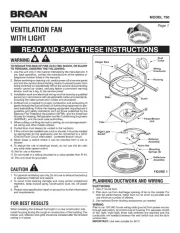
19 Juli 2025
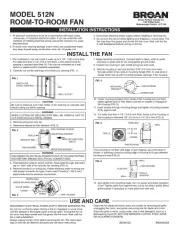
19 Juli 2025

19 Juli 2025
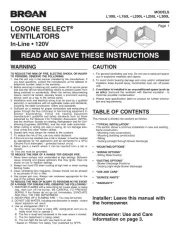
19 Juli 2025
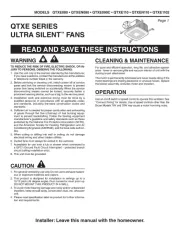
19 Juli 2025
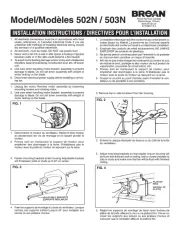
18 Juli 2025
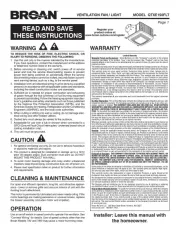
18 Juli 2025
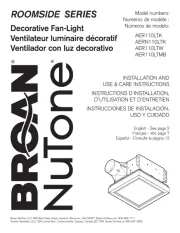
18 Juli 2025
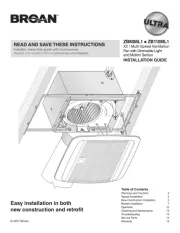
18 Juli 2025
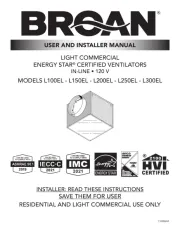
18 Juli 2025
Bedienungsanleitung Ventilator
- Breville
- Guzzanti
- Kambrook
- Tomado
- Gorenje
- Premium Levella
- Wallair
- KDK
- Metabo
- GoldAir
- White Shark
- GOTIE
- LC-Power
- Valueline
- Bayside
Neueste Bedienungsanleitung für -Kategorien-
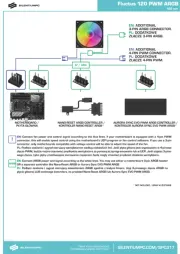
31 Juli 2025
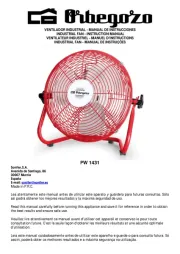
30 Juli 2025

30 Juli 2025
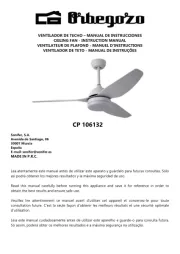
30 Juli 2025

30 Juli 2025
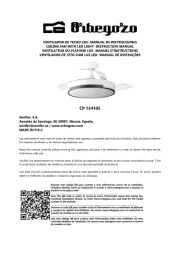
29 Juli 2025
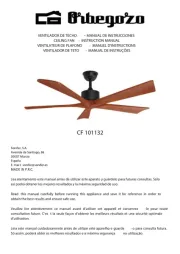
29 Juli 2025
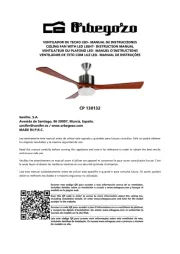
29 Juli 2025
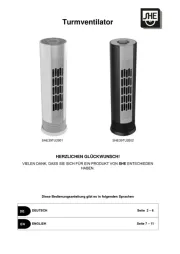
29 Juli 2025
